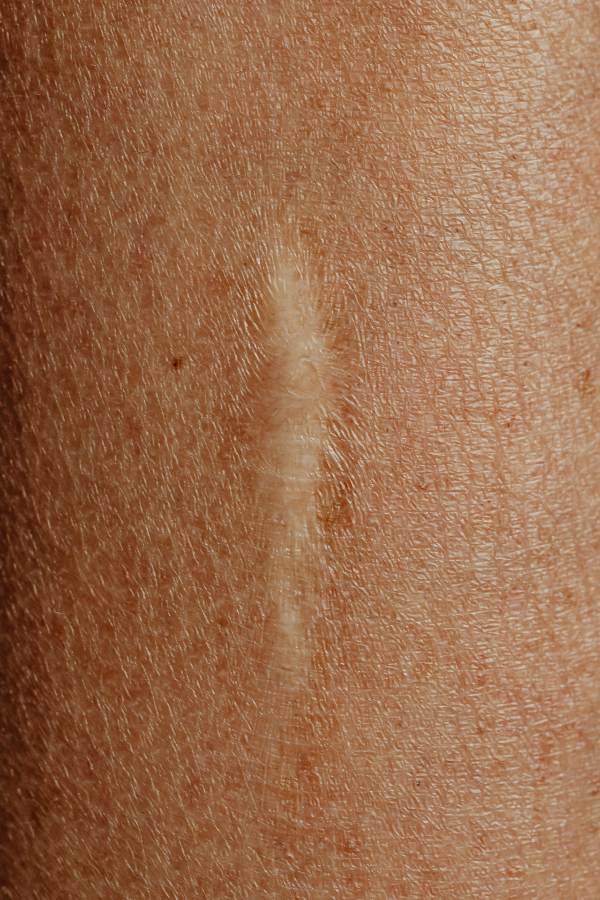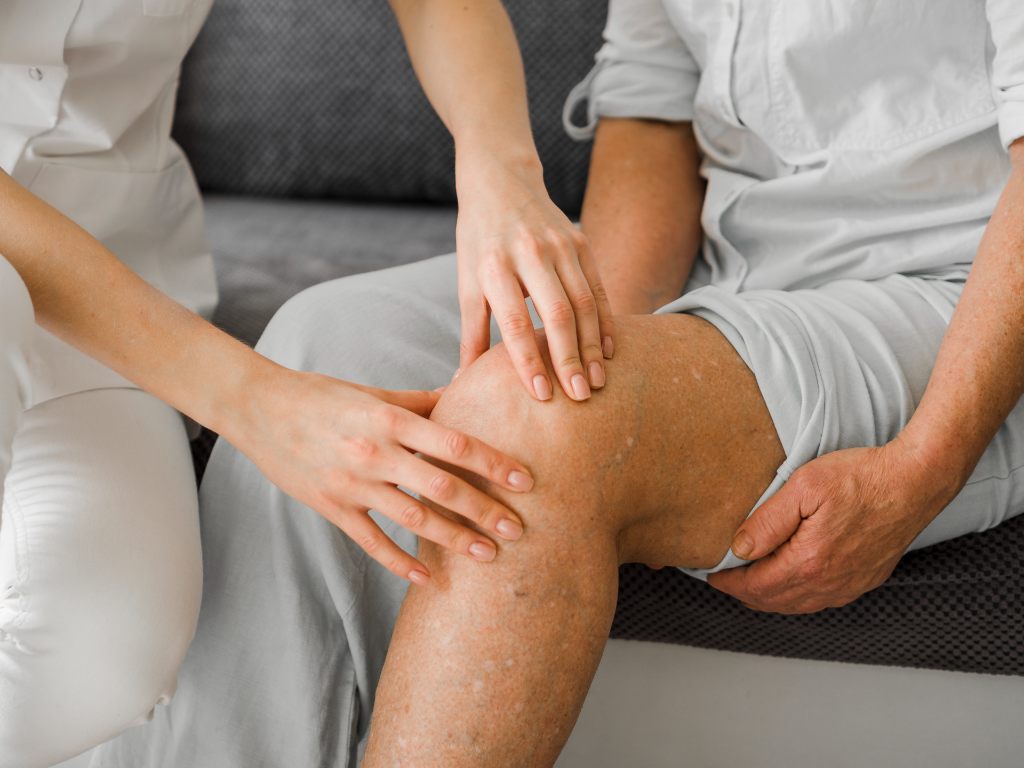Patellar tendonitis, also commonly known as “Jumper’s Knee,” is an injury to the tendon connecting your kneecap (patella) to your shinbone. This tendon plays a vital role in how you use your leg muscles and is crucial for activities that involve jumping or quick changes in direction. Hence, athletes, especially those involved in sports such as basketball or volleyball, are often susceptible to this condition.
In managing patellar tendonitis, shockwave therapy is an innovative treatment that has shown promising results. This non-invasive therapy works by applying a series of acoustic waves to the affected area, promoting regeneration and reparative processes in the bones, tendons, and other soft tissues. Particularly, SoftWave therapy, a type of shockwave therapy, has been especially effective in treating patellar tendonitis by minimizing pain and accelerating recovery without causing damage or microtrauma.
In this blog post, we’ll investigate:
- What is Patellar Tendonitis?
- Understanding Shockwave Therapy
- Does Shockwave Help Patellar Tendonitis?
- Benefits of Shockwave Therapy for Patellar Tendonitis
- What To Expect During & After a ShockWave Therapy
- Procedure and Recovery Time
- Does Shockwave Therapy Hurt?
- Does ShockWave Therapy Have Side Effects?
- Precautions & Recommendations
- Best ShockWave Therapy for Patellar Tendonitis
What is Patellar Tendonitis: Causes & Symptoms
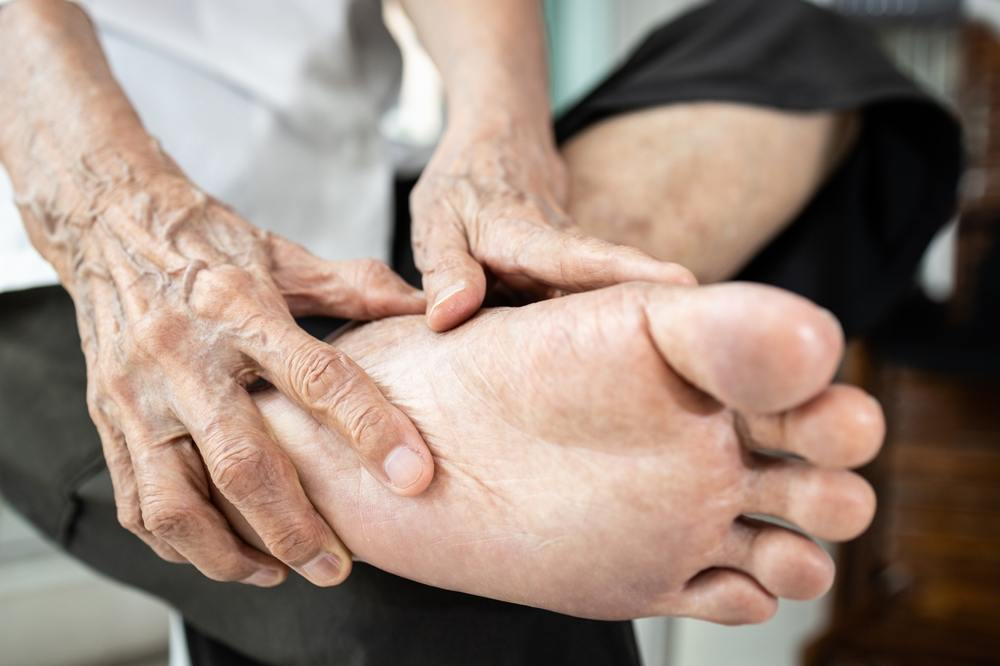
Patellar tendonitis is a subset of a larger family of conditions known as patellar tendinopathy. It’s characterized by the inflammation of the patellar tendon, which can be caused by excessive jumping, landing, or changing direction—activities that put repeated stress on the patellar tendon. Symptoms often include:
- pain and tenderness at the base of the kneecap
- difficulty in performing activities that require knee bending, and
- sometimes swelling.
A typical case of patellar tendonitis could be an athlete who intensifies their training regimen without giving the body adequate time to adjust, thereby causing the patellar tendon to become inflamed. If this tendonitis is left untreated, it can progress into a more serious condition called tendinosis, characterized by tears in the tendon and requiring a longer recovery time.
Despite various treatment methods available for patellar tendonitis, including rest, physical therapy, and medications, some cases may not respond well to these conventional approaches, making it necessary to explore alternative treatments like shockwave therapy.
It’s important to note that these are just some of the most common causes of patellar tendonitis. If you are experiencing patellar tendonitis, you can learn if your condition is suitable for treatment and try shockwave therapy with our New Patient Special.
Considering Shockwave Therapy?
Try SoftWave Therapy for just $69. Non-invasive healing that reaches deeper.
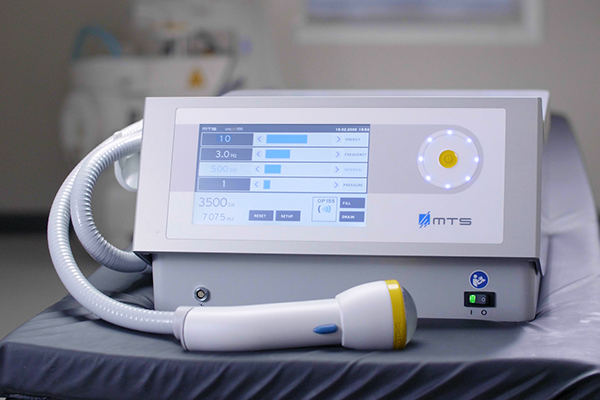
Understanding Shockwave Therapy as a Treatment for Patellar Tendonitis
Shockwave therapy, a non-invasive treatment used in physiotherapy, orthopedics, and urology, has gained increasing recognition as a potential treatment option for patellar tendonitis
At its core, Shockwave therapy is a method that uses acoustic shockwaves to stimulate healing in painful body regions. These shockwaves are short, intense energy waves traveling faster than the speed of sound. They may either be high-energy or low-energy waves, and their application depends on the patient’s condition and the treatment phase.
Its wide-ranging therapeutic uses span across various medical disciplines. For example:
Orthopedics: It can treat conditions like patellar tendonitis, plantar fasciitis, tennis elbow, and calcific tendinitis of the shoulder.
Urology: it’s frequently used to break down kidney stones—a process known as lithotripsy.
Dermatology: It is used to treat certain conditions such as cellulite and skin elasticity issues.
An important progression in the field of shockwave therapy is the development of SoftWave therapy. SoftWave therapy uses broad-focused low-intensity shockwaves that interact with tissue at a cellular level. The resulting biological responses include increased local blood flow, tissue regeneration, and reduced inflammation. Notably, SoftWave therapy doesn’t cause microtrauma, unlike other types of shockwaves, making it a safe and highly efficient treatment, especially for patellar tendonitis and other chronic conditions.
Does Shockwave Help Patellar Tendonitis?
Shockwave therapy is an effective treatment for patellar tendonitis, as evidenced by numerous studies. This non-invasive therapy uses acoustic waves to stimulate the body’s healing process, encouraging tissue regeneration and reducing chronic inflammation, a principal concern with patellar tendonitis.
Several studies support its efficacy. A cross-sectional study published in the Clinical Journal of Sports Medicine reported significant symptom improvement in athletes with chronic patellar tendinopathy after shockwave therapy. Similarly, an International Journal of Surgery review confirmed the positive impact of shockwave therapy, particularly with high-energy flux density.
Another review in the British Columbia Medical Journal suggested Extracorporeal Shock Wave Therapy (ESWT) as an alternative for patients who didn’t respond to other non-surgical treatments.
However, it’s important to note that not all shockwave therapies are created equal. Some, like SoftWave therapy, take a different approach. SoftWave uses broad-focused low-intensity shockwaves to stimulate a healing response in body tissues. It covers a wider and deeper area (7cm x 12cm) compared to traditional focused shockwaves or radial waves. This makes it especially beneficial for treating large joint and muscle issues. Additionally, SoftWave therapy typically necessitates fewer sessions than other shockwave treatments.
Benefits of Shockwave Therapy for Patellar Tendonitis
Shockwave therapy, particularly SoftWave therapy, can offer a new ray of hope for patients struggling with patellar tendonitis. It’s especially beneficial for those who have tried traditional treatment methods without much success, or those who wish for a non-invasive treatment option with quicker recovery times. Here are some significant benefits of Shockwave therapy for patellar tendonitis:
- Pain & Inflammation Reduction: Shockwave therapy works by stimulating the body’s natural healing process, leading to a reduction in pain and inflammation over time.
- Non-Invasive Treatment: Unlike surgery, shockwave therapy is non-invasive, meaning it doesn’t require incisions or anesthesia, reducing the risk of complications.
- Quick Sessions: Each session of shockwave therapy is relatively quick, typically lasting around 15-20 minutes, making it a convenient treatment option.
- Promotes Healing: Shockwave therapy can stimulate blood flow, encourage cellular regeneration, and promote the healing of the tendon.
Improved Mobility: As pain decreases and the tendon heals, patients often find that their mobility improves, enabling them to return to their daily activities and sports faster.
What To Expect During & After a ShockWave Therapy for Patellar Tendonitis
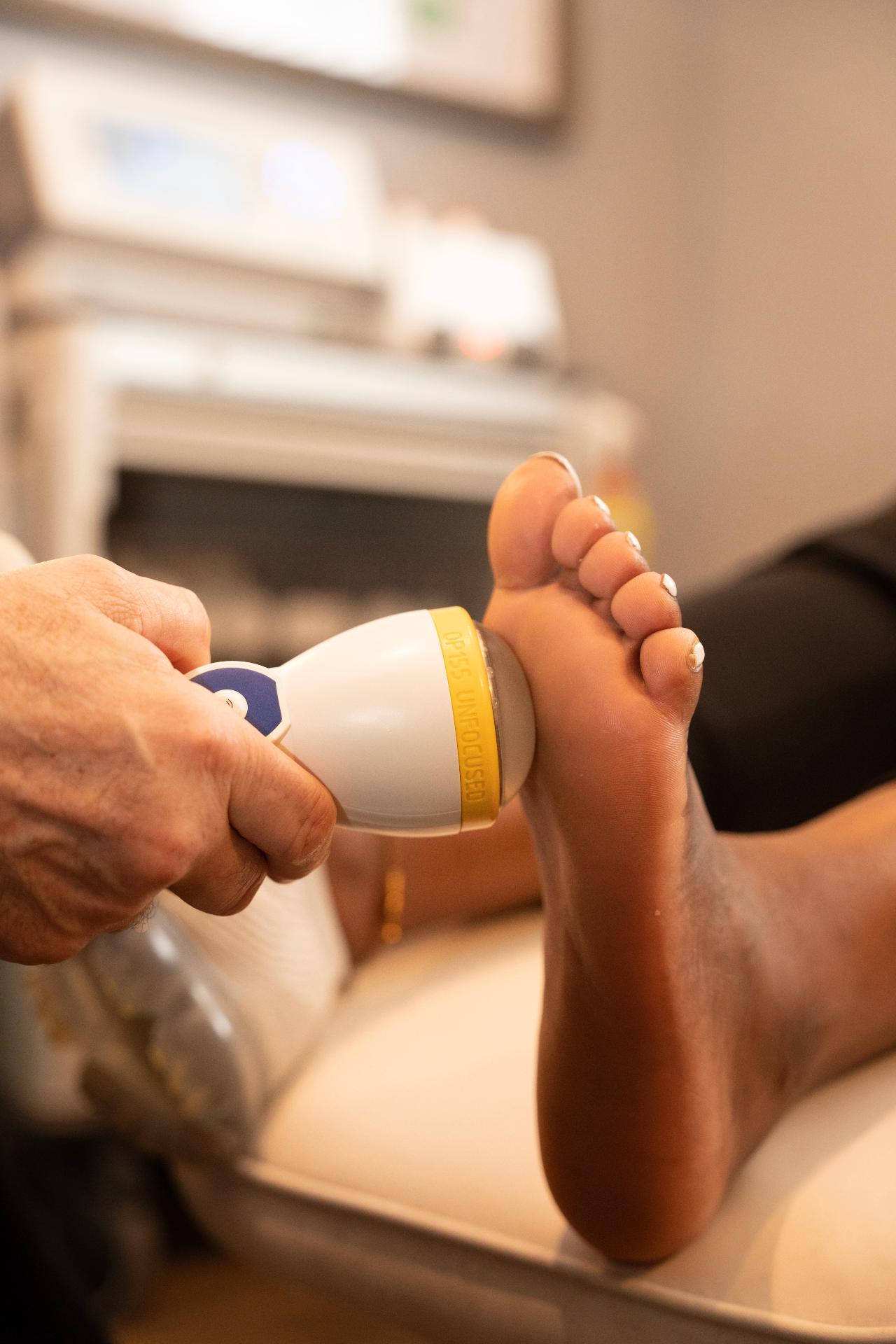
Undergoing shockwave therapy might be a new experience for many. Knowing what to expect can alleviate any apprehensions and ensure you are well-prepared for the procedure.
Considering Shockwave Therapy?
Try SoftWave Therapy for just $69. Non-invasive healing that reaches deeper.

The Procedure and Recovery Time of Shockwave Therapy
During a shockwave therapy session, a clinician applies a gel to the skin, which helps the shockwave machine make efficient contact. The machine then sends pressure waves through the skin and to the affected tendon. Each session typically lasts for about 15 to 20 minutes. After the treatment, patients can immediately resume their normal daily activities, marking the notable advantage of shockwave therapy’s recovery time.
Does Shockwave Therapy Hurt?
The comfort level during shockwave therapy can vary among individuals. Some may feel slight discomfort or pain during the procedure, especially if a sensitive area or an area with less soft tissue padding is being treated. However, the intensity of the treatment can be adjusted to keep it within the patient’s comfort level.
Does ShockWave Therapy Have Side Effects?
Like any treatment, shockwave therapy does come with potential side effects. Some patients may experience pain during the procedure, which is why some forms of shockwave therapy may require local anesthesia or a form of pain management.
Common shockwave therapy side effects may include:
- Mild bruising
- Swelling
- Pain
- Numbness or tingling in the treated area.
However, these side effects are usually temporary and should subside within a week.
On the other hand, SoftWave therapy, an FDA-approved form of shockwave therapy, has minimal and non-restrictive side effects. It does not cause bruising or swelling, and any slight redness or soreness typically subsides within one to two days. Thus, patients can rest assured knowing that while they are on the road to recovery, the journey will be as comfortable as possible.
Precautions & Recommendations for Patients Wanting To Try ShockWave Therapy
Although shockwave therapy is an innovative and often highly effective treatment for conditions such as patellar tendonitis, it’s important to remember that it may not be suitable for everyone. Your medical history, current health status, and other factors can influence whether this treatment is right for you.
Where should you not use shockwave therapy? Here are some conditions where shockwave therapy might not be advisable:
- If you’re pregnant (especially avoid therapy around the abdomen and lower back area)
- Treatment over a pacemaker (Shockwave treatment near your pacemaker can disrupt its function)
- If you have malignant tumors or cancer in the proposed treatment area
Best ShockWave Therapy for Patellar Tendonitis
For those struggling with patellar tendonitis, SoftWave therapy emerges as a standout choice among various shockwave therapies. Approved by the FDA and well-regarded nationwide, SoftWave therapy utilizes a patented technology known for its outstanding tissue regeneration capabilities. Unlike other high-intensity shockwave therapies, SoftWave is the only treatment using genuine broad-focused shock waves. This means it can treat larger and deeper areas of tissue – a significant advantage over other methods.
If you are experiencing patellar tendonitis and traditional treatments have fallen short in providing the relief you need, it might be time to consider SoftWave therapy. Seek out a SoftWave Therapy provider near you or learn more about SoftWave to know if it could be the full treatment solution you’ve been waiting for.
New Patient Special
Try SoftWave for just $69 at a clinic near you and learn if you’re a candidate for full treatment


